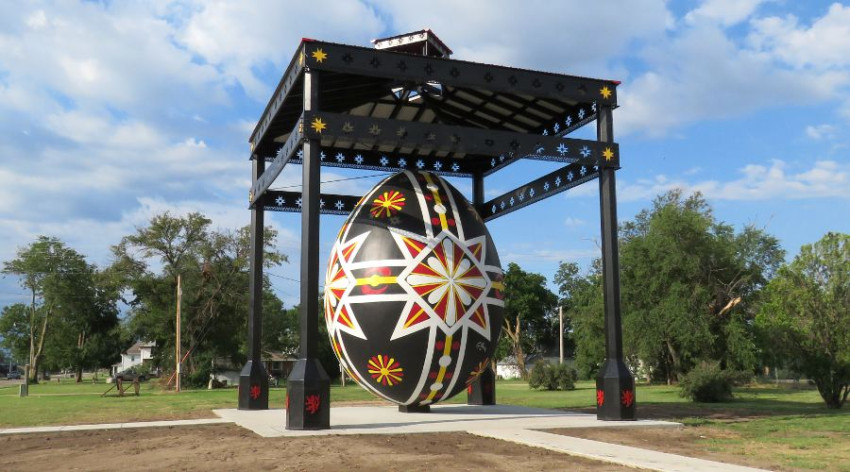on August 8, 2023
World’s Largest Things in Kansas
Looking for a Kansas road trip? Check out some of these “World’s Largest” attractions worth visiting in Kansas!
World’s Largest Belt Buckle
Abilene
Standing at 19 feet 10 ½ inches tall, the World’s Largest Belt Buckle is found at Eisenhower Park in Abeline. The buckle was made in 2022 in hopes that travelers will stop and visit the “Best Historic Small Town”.
“People should visit the World’s Largest Belt Buckle because it celebrates: art, cowboy culture and Abeline. Named Best Roadside Attraction in the U.S. by TravelAwaits, it really is an incredible stop,” says Julie from Visit Abilene Kansas.
World’s Largest Hand painted Czech Egg
Wilson
Dedicated in 2016, the 20 feet high and 15 feet wide Czech Egg stands in the Ed & LaVange Shiroky Park in Wilson. The egg was created and funded by many in Kansas, it is hand painted with a traditional Czech design by local artist, Christine Slechta.
World’s Largest Ball of Twine
Cawker City
Started in 1953 by Frank Stoeber, after four years the ball of twine weighed 5,000 pounds and stood 8 feet high. It now weighs around 14 tons and contains more than 1,600 miles of twine. Take a trip to Cawker City and add to the ball yourself. It’s recommended to call or email a day ahead to schedule a time to get your pre-measured twine, but you can view it at your leisure anytime.
World’s Largest Easel
Goodland
The World's Largest Easel (or at least the largest along a U.S. Interstate) is a whopping 80 feet tall holding a 32x24-foot representation of one of Van Gogh's "Sunflower" paintings. The easel can be found a half-mile off of I-70, along Hwy 24 near the center of Goodland. The steel easel weighs 45,000 pounds and has supports 35 feet into the ground.
World's Second Largest Pallasite Meteorite and the World's Second Largest Hand-Dug Well
Greensburg
This stop is a two for one! The World’s Second Largest Pallasite Meteorite can be found inside the gift shop of the World's Second Largest Hand-Dug Well in Greensburg. Weighing 1,000 pounds, the half iron and half stone pallasite meteorite was uncovered and placed in the museum in 1949.
In 1887, Jack Wheeler led his crew to dig a 32-feet wide, 109-feet deep well with two feet thick native stone walls. The well was built for city water and supplied Greensburg up until 1932 when another well was dug nearby. The original well has been a tourist attraction since 1939.











